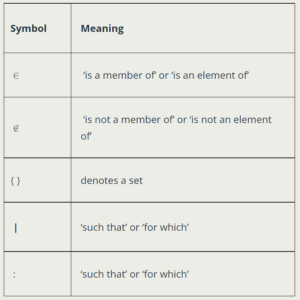What is a set?
Well, simply put, it’s a collection.
First we specify a common property among “things” (we define this word later) and then we gather up all the “things” that have this common property.
For example, the items you wear: hat, shirt, jacket, pants, and so on.
I’m sure you could come up with at least a hundred.
This is known as a set.
|
Or another example is the types of fingers. This set includes index, middle, ring, and pinky. |
 |
So it is just things grouped together with a certain property in common.
Set notation is used in mathematics to essentially list numbers, objects, or outcomes. The set notation uses curly brackets { } which are sometimes referred to as braces. Objects placed within the brackets are called the elements of a set and do not have to be in any specific order.
Notation
There is a fairly simple notation for sets. We simply list each element (or “member”) separated by a comma, and then put some curly brackets around the whole thing:
The curly brackets { } are sometimes called “set brackets” or “braces”.
A set is usually denoted by capital letters, i.e. A, B, C, …, X, Y, Z etc. and the elements are denoted by small letters.
What is Set Notation?
Set notation is a system of symbols used to:
- define elements of a set
- illustrate relationships among sets
- illustrate operations among sets

How do we read and write set notation?
To read and write set notation, we need to understand how to use symbols in the following cases:
1. Denoting a Set
Conventionally, we denote a set by a capital letter and denote the elements of the set by lower-case letters.
We usually separate the elements using commas. For example, we can write the set A that contains the vowels of the English alphabet as:
A = {a, e, i o, u}
We read this as “the set A containing the vowels of the English alphabet”.
2. Set Membership
We use the symbol ∈ is used to denote membership in a set.
B = {1, 2, 3, 4, 5}
1 ∈ B meaning ‘1 is an element of B’
6 ∉ B meaning ‘6 is not an element of B’
Since 1 is an element of set B, we write 1∈B and read it as ‘1 is an element of set B’ or ‘1 is a member of set B’.

